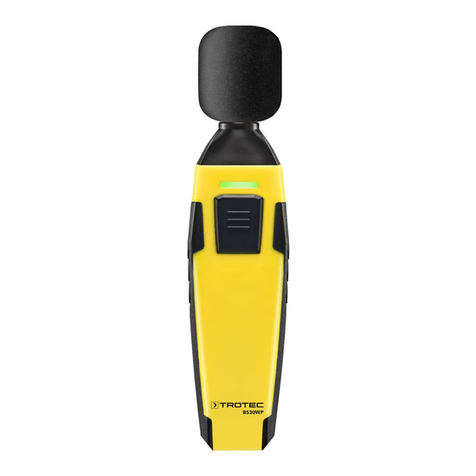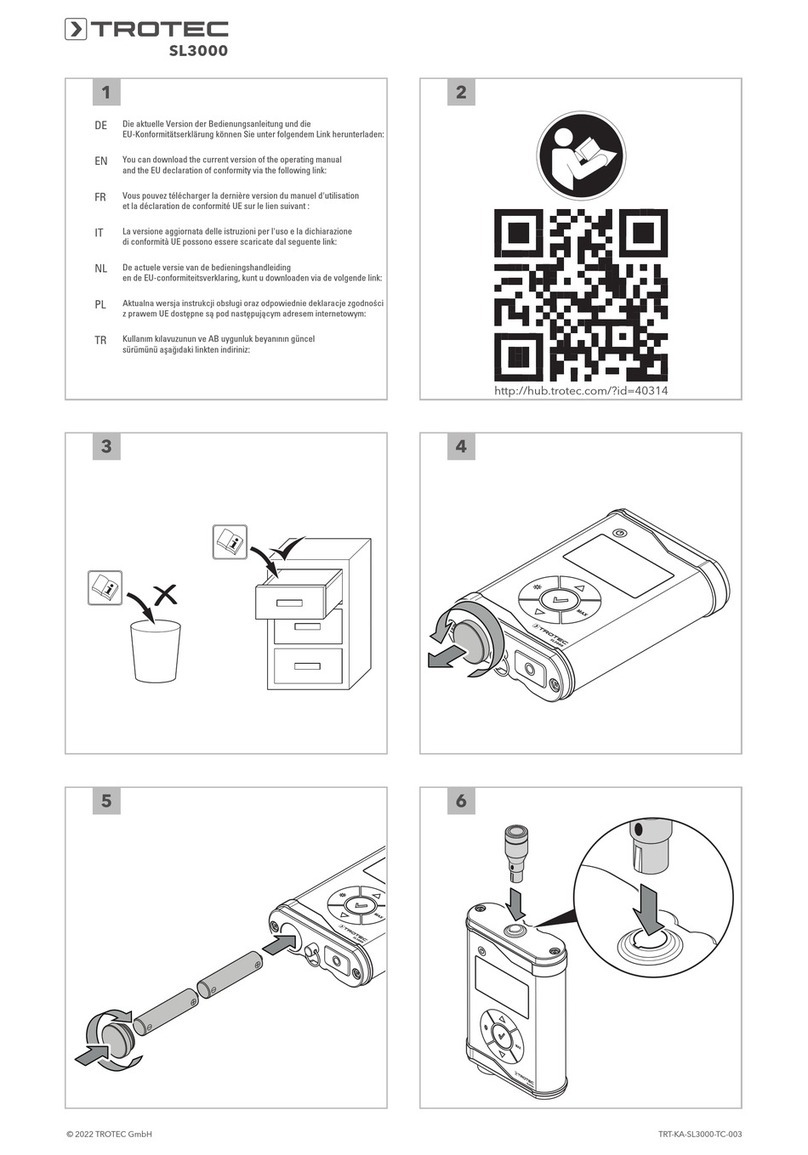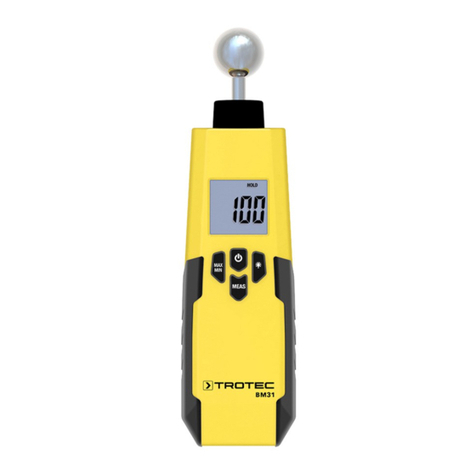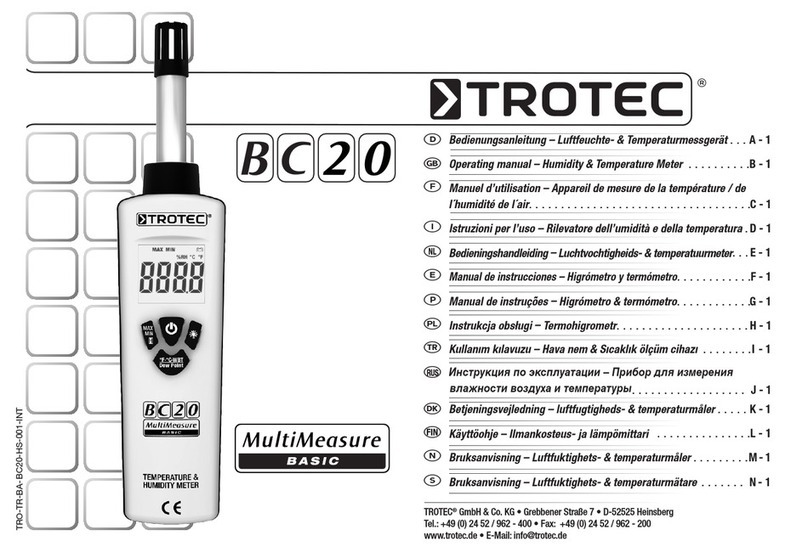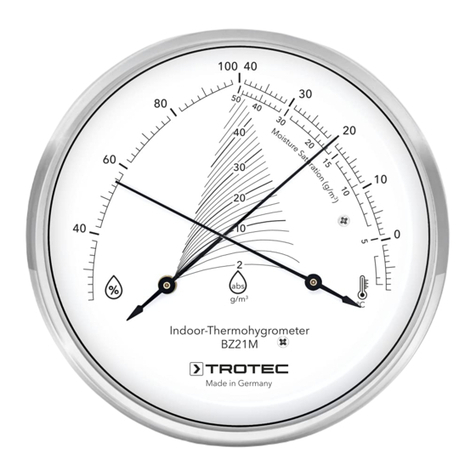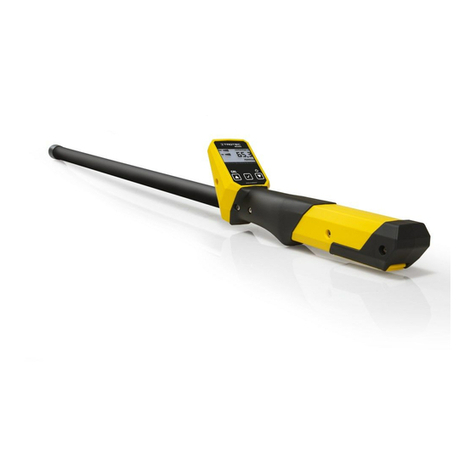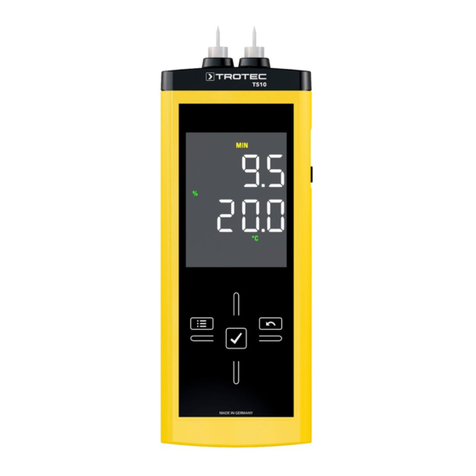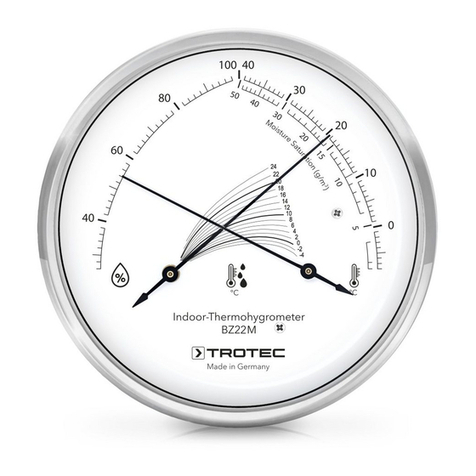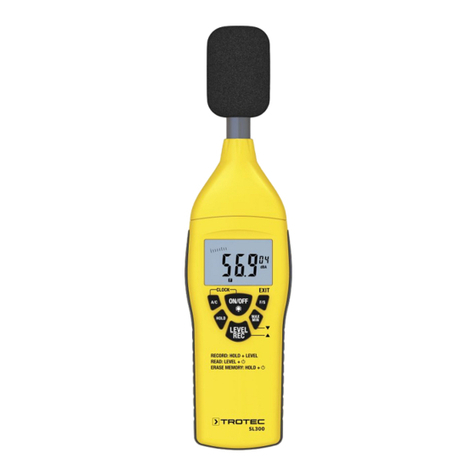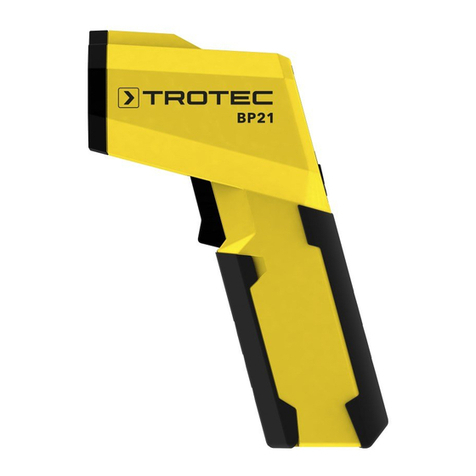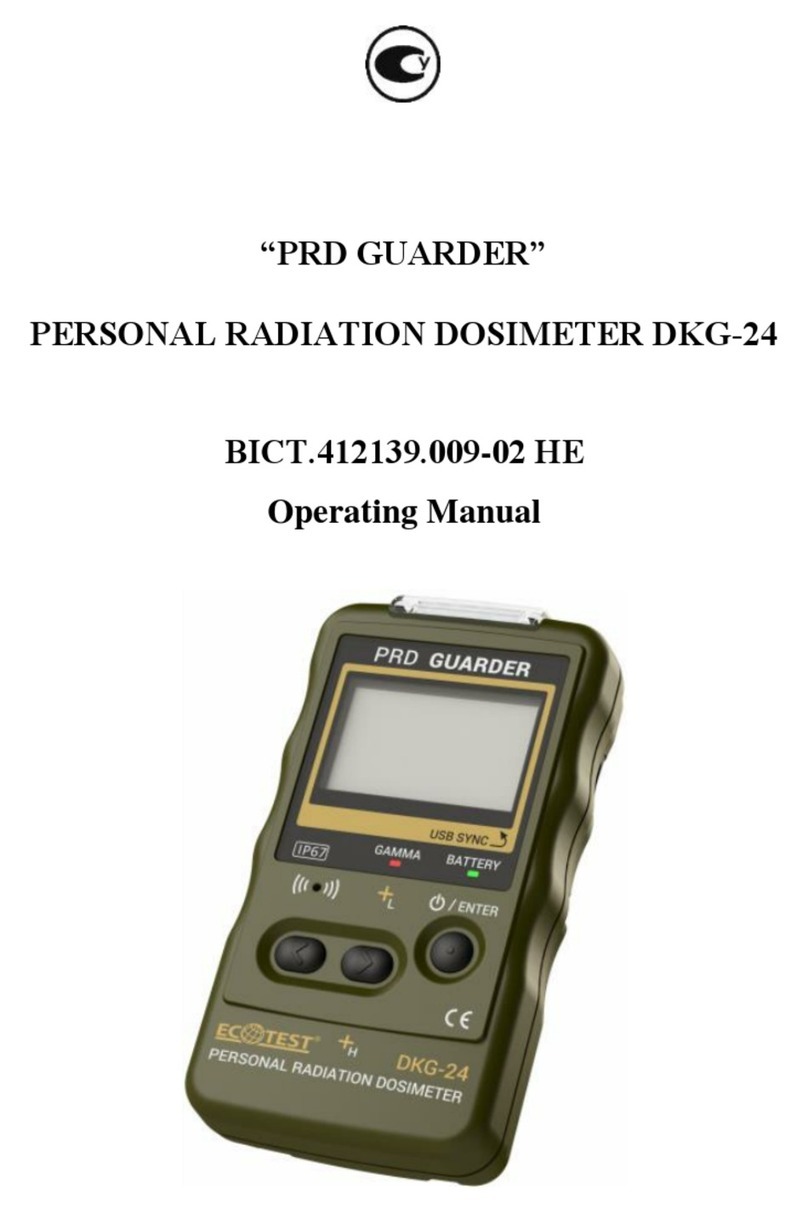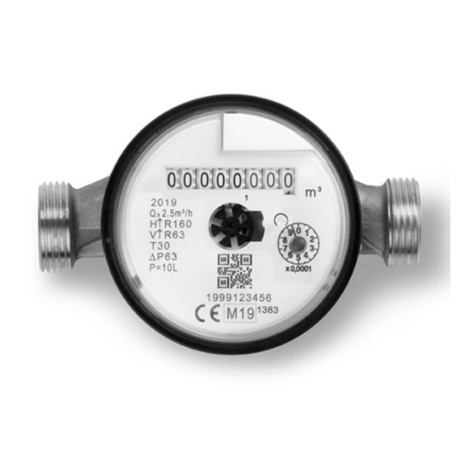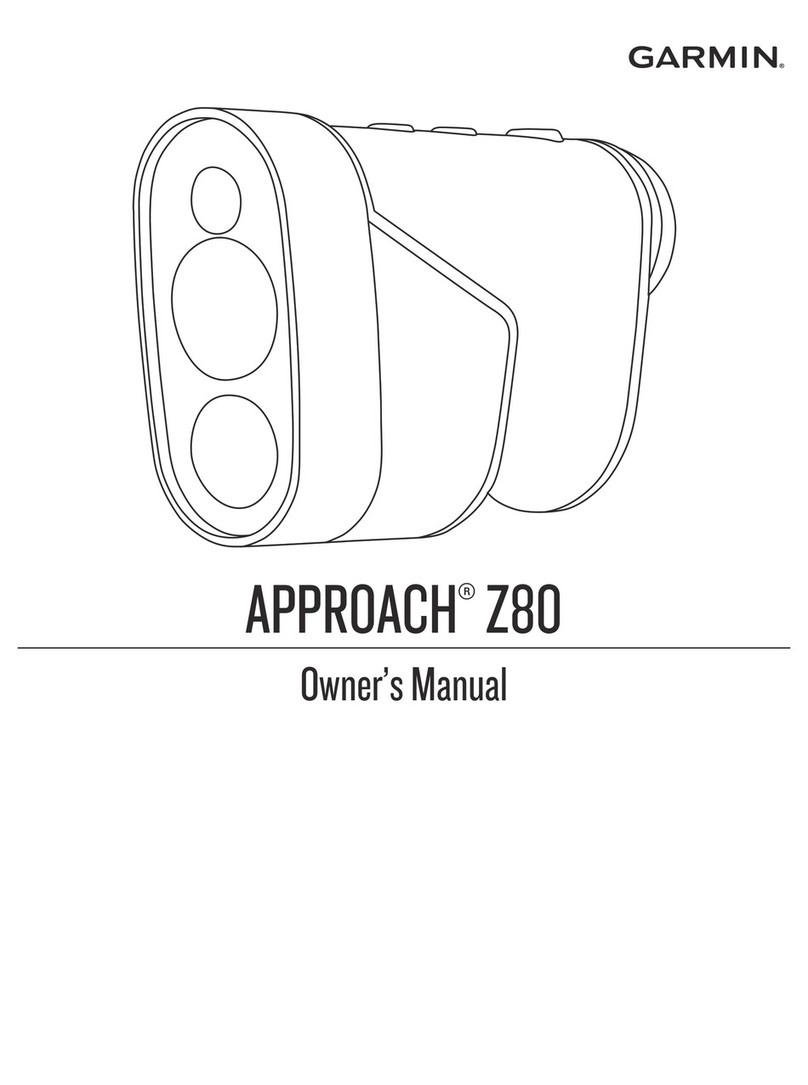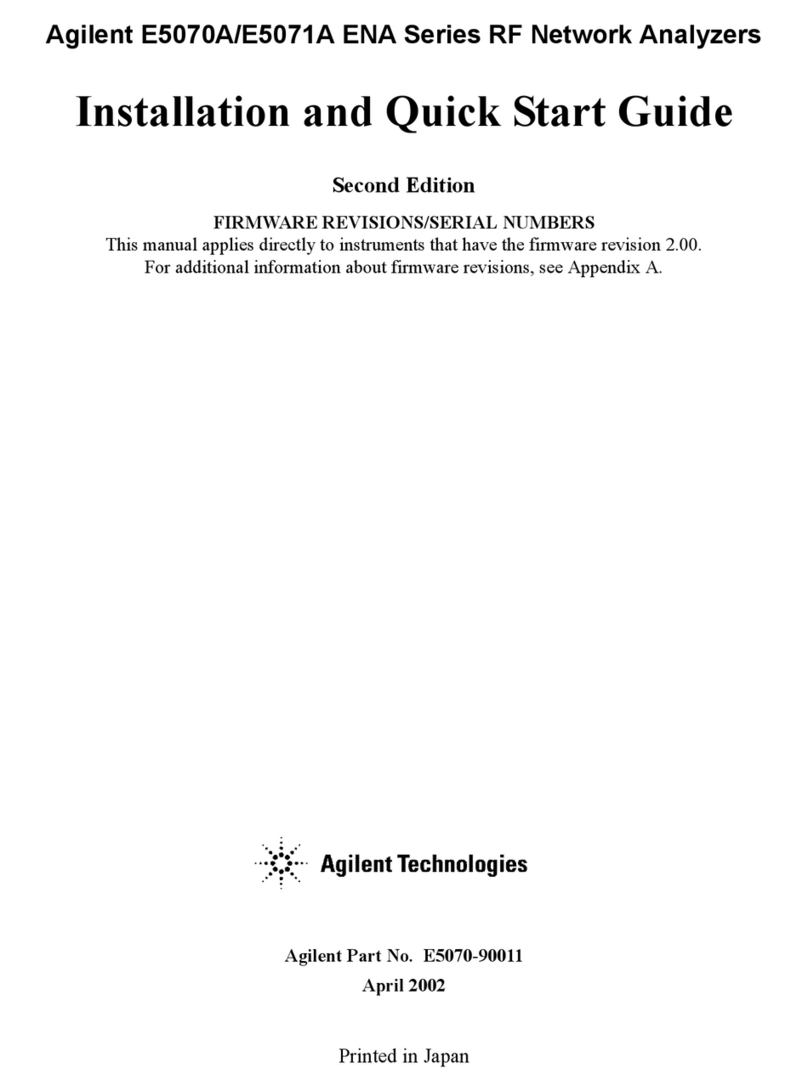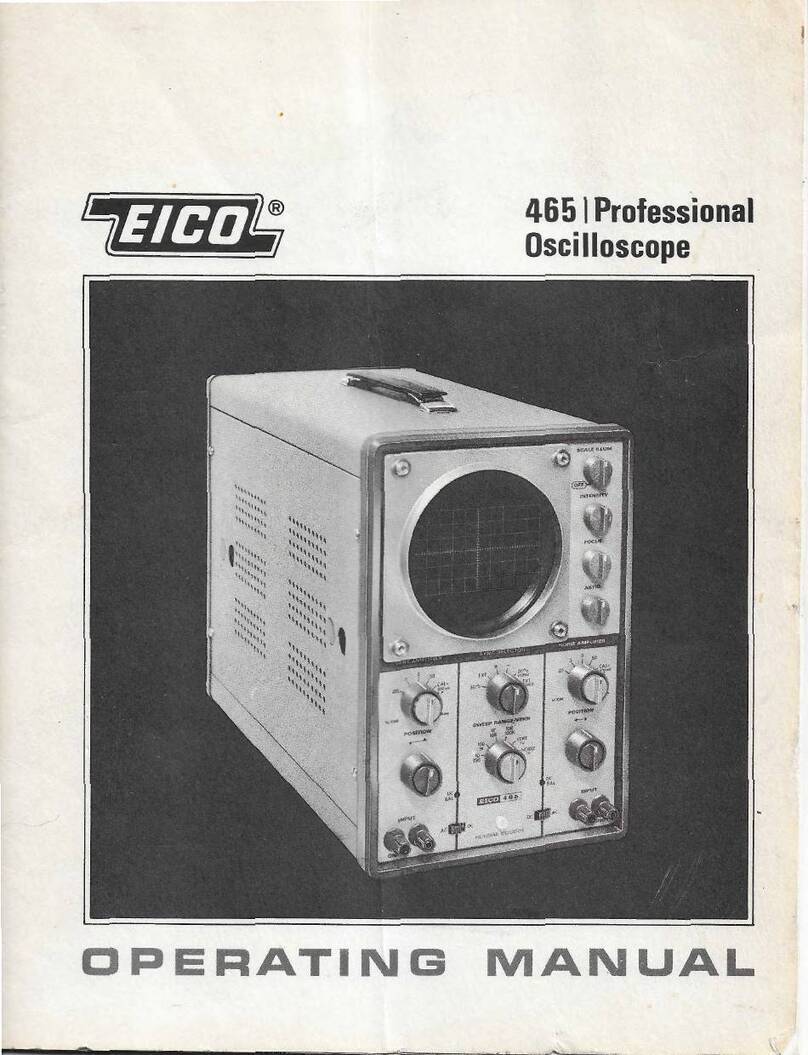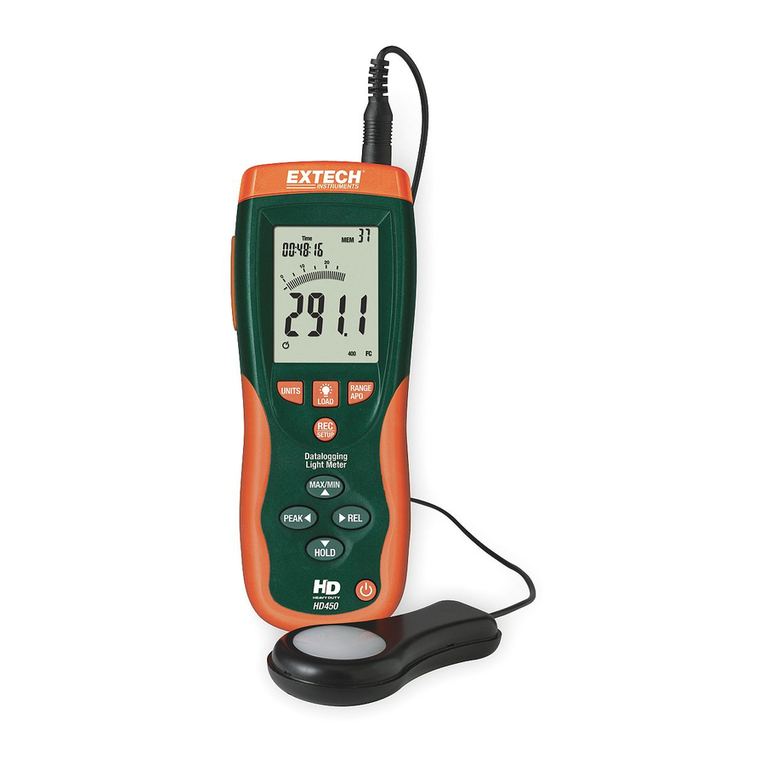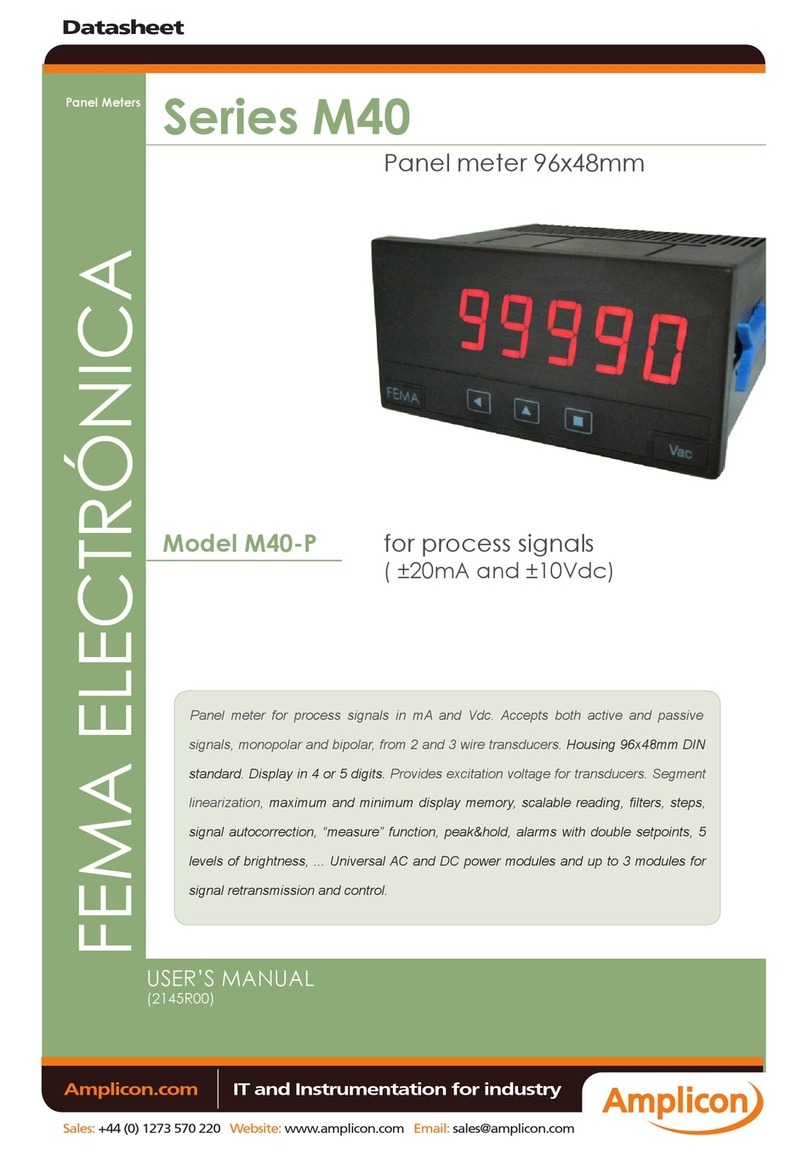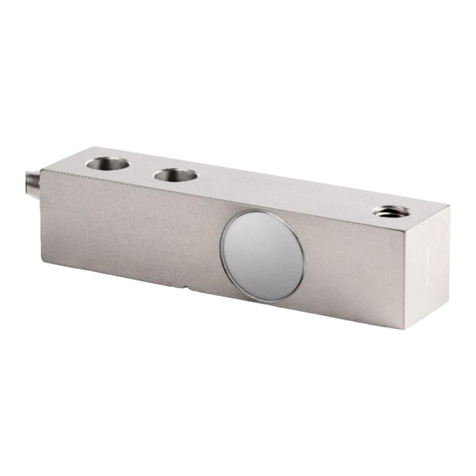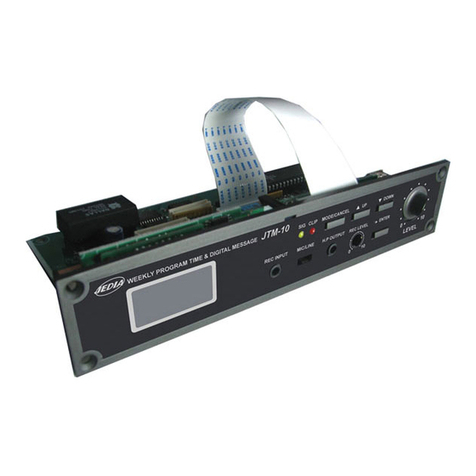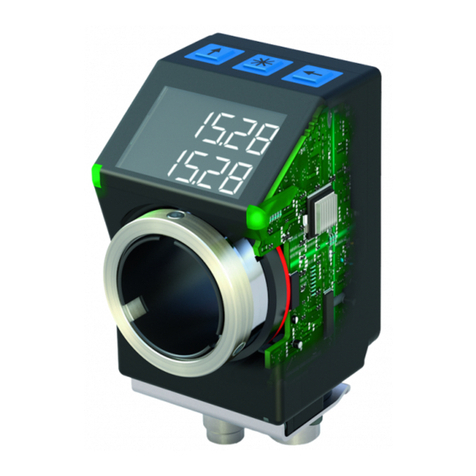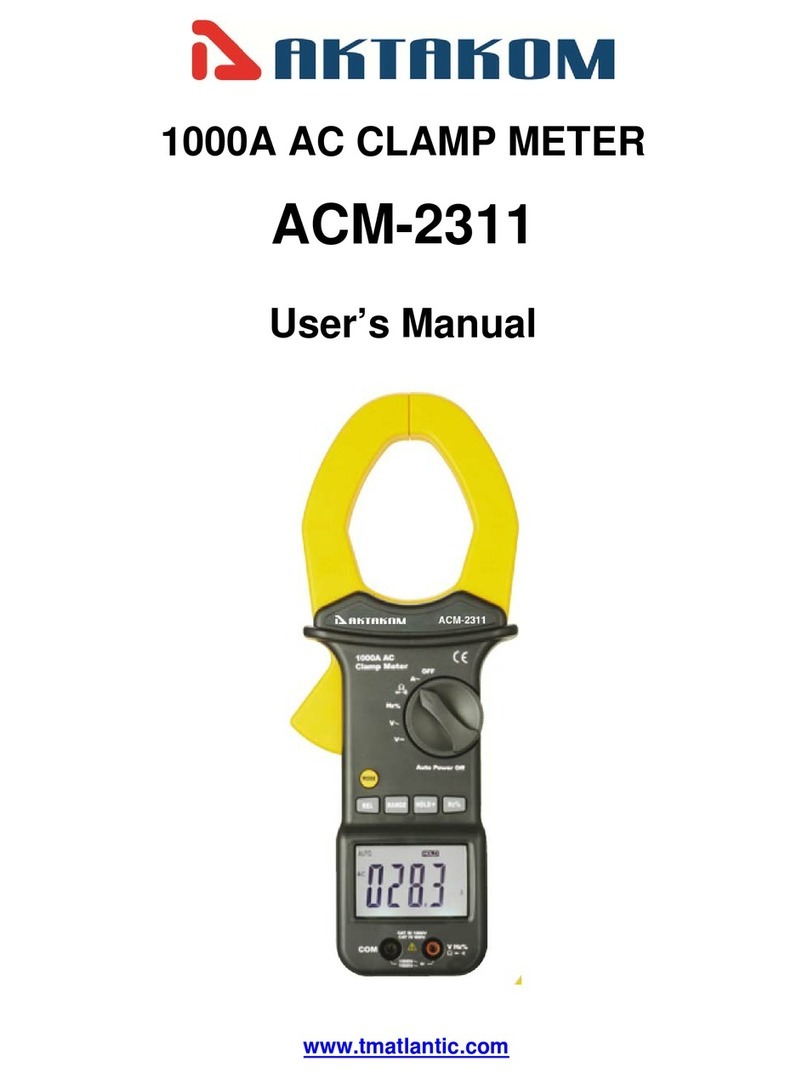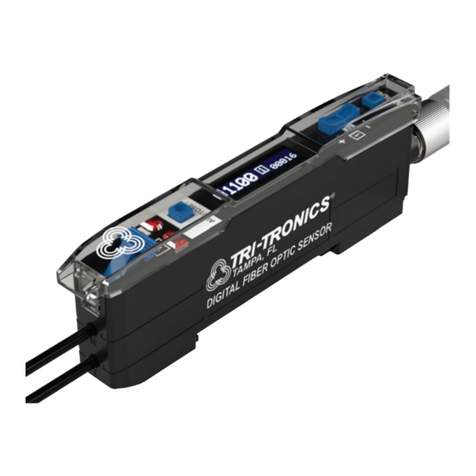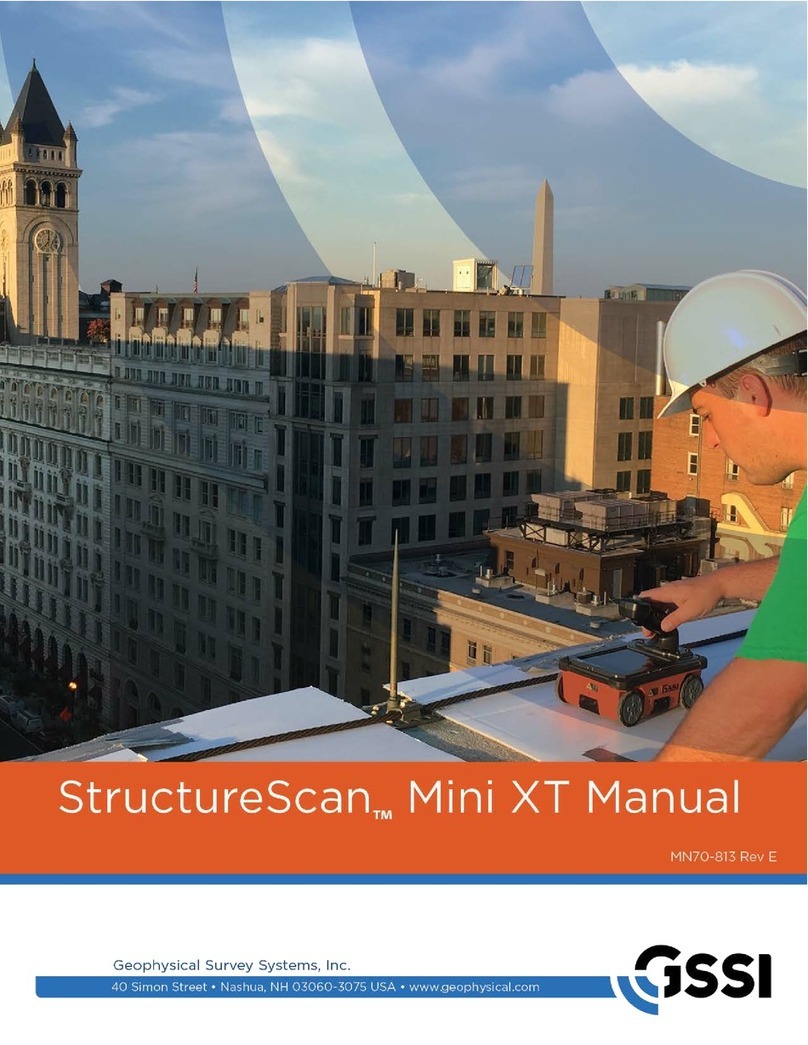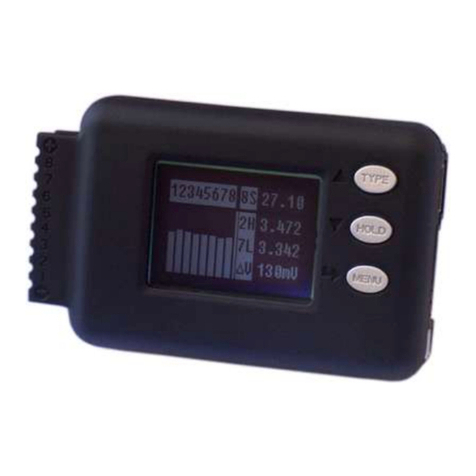Trotec TP10 User manual

TRT-BA-TP10-TC231106TTRT02-004-EN
TP10
EN
INSTRUCTIONS
PYROMETER

2 EN
pyrometer TP10
Table of contents
Information on the use of this instructions..........................2
Safety .....................................................................................2
Information about the device................................................4
Transport and storage...........................................................7
Operation ...............................................................................8
Maintenance and repair ......................................................12
Errors and faults..................................................................12
Disposal ...............................................................................13
Information on the use of this instructions
Symbols
Warning of electrical voltage
This symbol indicates dangers to the life and health of
persons due to electrical voltage.
Warning of laser radiation
This symbol indicates dangers to the health of persons
due to laser radiation.
Warning
This signal word indicates a hazard with an average
risk level which, if not avoided, can result in serious
injury or death.
Caution
This signal word indicates a hazard with a low risk
level which, if not avoided, can result in minor or
moderate injury.
Note
This signal word indicates important information (e.g.
material damage), but does not indicate hazards.
Info
Information marked with this symbol helps you to carry
out your tasks quickly and safely.
Follow the manual
Information marked with this symbol indicates that the
instructions must be observed.
You can download the current version of the instructions and
the EUdeclaration of conformity via the following link:
TP10
https://hub.trotec.com/?id=40356
Safety
Read this manual carefully before starting or using the
device. Always store the manual in the immediate vicinity
of the device or its site of use.
Warning
Read all safety warnings and all instructions.
Failure to follow the warnings and instructions may
result in electric shock, fire and/or serious injury.
Save all warnings and instructions for future
reference.
• Do not use the device in potentially explosive rooms or
areas and do not install it there.
• Do not use the device in aggressive atmosphere.
• Do not immerse the device in water. Do not allow liquids to
penetrate into the device.
• The device may only be used in dry surroundings and must
not be used in the rain or at a relative humidity exceeding
the operating conditions.
• Protect the device from permanent direct sunlight.
• Do not expose the device to strong vibrations.
• Do not open the device.
• Do not remove any safety signs, stickers or labels from the
device. Keep all safety signs, stickers and labels in legible
condition.
• Avoid looking directly into the laser beam.
• Never point the laser beam at people or animals.
• Never charge batteries that cannot be recharged.
• Different types of batteries and new and used batteries
must not be used together.
• Insert the batteries into the battery compartment according
to the correct polarity.
• Remove discharged batteries from the device. Batteries
contain materials hazardous to the environment. Dispose
of the batteries according to the national regulations.
• Remove the batteries from the device if you will not be
using the device for a longer period of time.

EN 3
pyrometer TP10
• Never short-circuit the supply terminal in the battery
compartment!
• Do not swallow batteries! If a battery is swallowed, it can
cause severe internal burns within2hours! These burns
can lead to death!
• If you think batteries might have been swallowed or
otherwise entered the body, seek medical attention
immediately!
• Keep new and used batteries and an open battery
compartment away from children.
• Observe the storage and operating conditions (see
Technical data).
Intended use
This device is exclusively intended for measuring temperature
by means of an infrared sensor in the measuring range
specified in the technical data. People who use this device must
have read and understood the operating manual, especially the
Safety chapter.
Any use other than the intended use is regarded as misuse.
Reasonably foreseeable misuse
The device must not be pointed at people. Do not use the device
in potentially explosive atmospheres, for measurements in
liquids or at live parts. Any unauthorised modifications,
alterations or structural changes to the device are forbidden.
Personnel qualification
People who use this device must:
• be aware of the dangers that occur when working with
laser measuring devices.
• have read and understood the instructions, especially the
Safety chapter.
Safety signs and labels on the device
Note
Do not remove any safety signs, stickers or labels from
the device. Keep all safety signs, stickers and labels in
legible condition.
The following safety signs and labels are attached to the device:
Warning
sign
Meaning The warning sign is located on the back of the
device and indicates that the device is equipped
with a class2 laser.
The power is less than 1.0mW. The frequency
range of the laser is630 to 670nm.
Do not look directly into the laser beam or the
opening from which the laser beam emerges!
Residual risks
Warning of electrical voltage
There is a risk of a short-circuit due to liquids
penetrating the housing!
Do not immerse the device and the accessories in
water. Make sure that no water or other liquids can
enter the housing.
Warning of electrical voltage
Work on the electrical components must only be
carried out by an authorised specialist company!
Warning of laser radiation
Laser class2, Pmax.: <1mW, λ: 400-700nm,
EN60825-1:2014
Do not look directly into the laser beam or the opening
from which it emerges.
Never point the laser beam at people, animals or
reflective surfaces. Even brief eye contact can lead to
eye damage.
Examining the laser output aperture by use of optical
instruments (e.g. magnifying glass, magnifiers and the
like) entails the risk of eye damage.
When working with a laser of class2, observe the
national regulations on wearing eye protection.
Warning
Risk of suffocation!
Do not leave the packaging lying around. Children may
use it as a dangerous toy.
Warning
The device is not a toy and does not belong in the
hands of children.

4 EN
pyrometer TP10
Warning
Dangers can occur at the device when it is used by
untrained people in an unprofessional or improper way!
Observe the personnel qualifications!
Caution
Keep a sufficient distance from heat sources.
Note
To prevent damages to the device, do not expose it to
extreme temperatures, extreme humidity or moisture.
Note
Do not use abrasive cleaners or solvents to clean the
device.
Information about the device
Device description
The pyrometer TP10 uses an infrared sensor to measure surface
temperatures without contact. An integrated multi-laser pointer
serves for the determination of the measuring spot.
You can set the emissivity of the material to be measured so as
to achieve a more precise measurement result.
For the temperature measurement the device allows you to set
freely definable thresholds. Exceeding or falling below these
preselected thresholds is indicated by an acoustic alarm
function and visually by a changed display colour.
The display can be illuminated as needed. When not in use, an
automatic switch-off saves the battery.
Measuring principle
The device measures the temperature by means of an infrared
sensor. Important factors playing a role in the temperature
measurement are the measuring spot diameter and the
emissivity.
Measuring spot
Observe the distance to measuring spot diameter ratio. The
larger the distance to the object, the larger the measuring spot
diameter and hence, the less precise the measured result. The
device calculates an average temperature from all the
temperatures in the measuring spot.
Ø 12 mm
@ 900 mm
Ø 48 mm
@ 3600 mm
MULTIPOINT-LASER
Distance : Spot = 75 : 1
Emissivity
Emissivity is a value used to describe the energy radiation
characteristics of a material.
Most organic materials have an emissivity of0.95. Metals or
shiny materials come with a much lower value.
A material's emissivity depends on various factors, e.g. on
• Material composition
• Surface condition
• Temperature
The emissivity can range between 0.1 and 1 (in theory).
The following rule of thumb can be assumed:
• When a material is rather dark and its surface texture matt,
it probably has a high emissivity.
• The brighter and smoother the surface of a material, the
lower will be its emissivity, presumably.
• The higher the emissivity of the surface to be measured,
the better it is suited for non-contact temperature
measurement by use of a pyrometer or thermal imaging
camera, since falsifying temperature reflections become
negligible.
Nevertheless, entering an emissivity as appropriate as possible
is indispensable for a precise measurement.

EN 5
pyrometer TP10
Emissivity table
The table below may be used as reference for setting the
emissivity. It supplies reference values for the emissivity of
common materials.
Material Emissivity
Aluminium, roughened 0.1 to 0.3
Aluminium, alloy A3003,
oxidized
0.3
Aluminium, oxidized 0.2 to 0.4
Asbestos 0.92 to 0.95
Tarmac 0.92 to 0.95
Basalt 0.7
Concrete 0.92 to 0.95
Bitumen 0.98 to 1.00
Lead, oxidized 0.2 to 0.6
Lead, rough 0.4
Roofing felt 0.95
Ice 0.98
Iron (forged), blunt 0.9
Iron, oxidized 0.5 to 0.9
Iron, rusted 0.5 to 0.7
Enamel varnish, black 0.95
Earth 0.92 to 0.96
Paint (not alkaline) 0.90 to 0.95
Paint (non-metal) 0.95
Gypsum 0.60 to 0.95
Glass, pane 0.85 to 0.95
Rubber 0.92 to 0.95
Cast iron, molten 0.2 to 0.3
Cast iron, not oxidized 0.2
Skin 0.98
Haynes alloy 0.3 to 0.8
Radiator enamel 0.95
Timber (natural) 0.90 to 0.95
Inconel, electro-polished 0.15
Inconel, oxidized 0.70 to 0.95
Inconel, sand-blasted 0.3 to 0.6
Limestone 0.95 to 0.98
Carborundum 0.9
Ceramics 0.88 to 0.95
Gravel 0.95
Carbon, graphite 0.70 to 0.85
Carbon, not oxidized 0.8 to 0.9
Material Emissivity
Plastic, non-transparent 0.95
Copper, oxidized 0.4 to 0.8
Varnish 0.80 to 0.95
Marble 0.90 to 0.95
Brass, highly polished 0.3
Brass, oxidized 0.5
Molybdenum, oxidized 0.2 to 0.6
Nickel, oxidized 0.2 to 0.5
Plastic 0.85 to 0.95
Plaster 0.90 to 0.95
Sand 0.9
Snow 0.9
Steel, heavy plate 0.4 to 0.6
Steel, cold-rolled 0.7 to 0.9
Steel, oxidized 0.7 to 0.9
Steel, polished sheet metal 0.1
Steel, stainless 0.1 to 0.8
Cloth 0.95
Wallpaper (non-metal) 0.95
Textiles (non-metal) 0.95
Titanium, oxidized 0.5 to 0.6
Clay 0.90 to 0.95
Water 0.93
Cement 0.90 to 0.96
Brick (rough) 0.90 to 0.95
Zinc, oxidized 0.1

6 EN
pyrometer TP10
Device depiction
1
2
3
4
5
6
7
8
9
11
10
No. Designation
1 Display
2F3 button
3Mode button
4F1 button
5F2 button
6 Laser pointer
7 Infrared sensor
8 Measurement button
9 Battery compartment with cover
10 Miniature contact pin connection
11 USBconnection
Display
HOLD
E=0,95
Max 23.1
23.1TK
Mn Mx
23.1C°
Hi Lo
8:28
Save Avg
Min
20
19
18
17
22
12 13 14 15 16
23
24
25
26
21
No. Designation
12 SCAN/HOLD indication
13 Laser indication
14 USB indication
15 Time indication
16 Battery status indication
17 Saving/Hi/Lo indication
18 Upper measured value indication
19 Temperature indication
20 Lower measured value indication
21 Scale indication
22 Menu
23 Min/Dif indication
24 Measured value indication
25 Max/Avg indication
26 Emission value indication

EN 7
pyrometer TP10
Technical data
Parameter Value
Model TP10
Weight 300g
Dimensions
(lengthx widthx
height)
168mmx 56mmx 225mm
Measuring range -50°C to 1850°C (-58°F to 2912°F)
Resolution ≤1000°C
>1000°C
0.1 °C / °F
1 °C / °F
Target display Laser classII, 630 to 670nm <1mW
Accuracy -50°C to 20°C
(-58°F to 68°F)
21°C to 500°C
(69°F to 932°F)
501°C to 1000°C
(933°F to 1832°F)
1001°C to 1850°C
(1833°F to
3362°F)
±3.0°C (± 5.4 °F)
± 1 % ± 1°C
(1.8°F)
±1.5%
±2.0 %
Repeatability -50°C to 20°C
(-58°F to 68°F)
21°C to 1000°C
(69°F to 1832°F)
1001°C to 1850°C
(1833°F to
3362°F)
±1.5°C (2.7°F)
± 0.5%, ± 0.5°C
(0.9°F)
±1 %
Emissivity adjustable from 0.10 to 1.0
Optical resolution 75:1 (D:S)
Smallest measuring
spot
ø 18 mm
Spectral sensitivity 8~14μm
Response time < 150 ms
Operating
temperature
0°C to 50°C (32°F to 122°F), 10% to
90%RH
Storage conditions -10°C to 60°C, <80%RH
Power supply 9 V battery
Switch-off After approx. 7seconds of non-use
TypeK contact sensor
Temperature range -50°C to 300°C (-58°F to 572°F)
Resolution 0.1 °C / °F
Accuracy ± 1.5 %, ± 3°C (5°F)
Repeatability ± 1.5 %
Operating conditions 0 °C to 50°C (32°F to 122°F), 10 to
90% RH
Storage conditions -10°C to 60°C (-2°F to 140°F),
<80%RH
Note:
Apart from the contact sensor included in the scope of delivery,
other type K temperature probes with miniature contact pin can
also be connected to the device. The pyrometer can process
and display the measurement data of the external sensor in a
measuring range from -50°C to 1,370°C.
Scope of delivery
• 1 x Pyrometer TP10
• 1x 9 V battery
• 1x Device bag
• 1 x CD with software
• 1 x Type K contact sensor
• 1 x USB cable
• 1 x Mini tripod
• 1x Quick guide
Transport and storage
Note
If you store or transport the device improperly, the
device may be damaged.
Note the information regarding transport and storage of
the device.
Transport
For transporting the device, use the bag included in the scope of
delivery in order to protect the device from external influences.
Storage
When the device is not being used, observe the following
storage conditions:
• dry and protected from frost and heat
• protected from dust and direct sunlight
• with a cover to protect it from invasive dust if necessary
• the storage temperature complies with the values specified
in the Technical data
• Batteries are removed from the device

8 EN
pyrometer TP10
Operation
Inserting the battery
Note
Make sure that the surface of the device is dry and the
device is switched off.
27
28
1. Open the battery compartment by folding open the
cover(28) with your fingers.
2. Use the battery clip(27) to connect the new battery
(1x 9V) with correct polarity.
3. Insert the battery in the battery compartment.
4. Close the cover of the battery compartment(28).
Carrying out a measurement
Info
Please note that moving from a cold area to a warm
area can lead to condensation forming on the device's
circuit board. This physical and unavoidable effect can
falsify the measurement. In this case, the display
shows either no measured values or they are incorrect.
Wait a few minutes until the device has become
adjusted to the changed conditions before carrying out
a measurement.
• Ensure that the surface to be measured is free of dust, dirt
or similar substances.
• To be able to gain exact measurement results on surfaces
which reflect heavily, stick matt masking tape to the
surface or apply matt black paint with a very high and
known emissivity.
• Note the 75:1 ratio of the distance to the measuring spot
diameter. For accurate measurements the measuring
object should be at least twice as large as the measuring
spot.
Please proceed as follows to carry out a measurement:
1. Point the device at the object to be measured.
2. Press the measurement button(8). Hold the measurement
button(8) if you want to perform a prolonged
measurement.
ðThe device turns on and carries out a measurement.
ðThe SCAN symbol(12) appears in the display. The
currently measured value is indicated.
3. Release the measurement button(8).
ðThe device stops measuring. The HOLD symbol(12)
appears in the display.
ðDepending on the setting of the device, either the
Max/Min value or the Avg/Dif value of the last
measurement will be displayed.
Settings
The bottom line of the display contains a three-part menu.
Within this menu different settings can be selected. You can
switch through the different menus using the Modebutton(3).
Menu example:
MxMn Save Avg
The menu is controlled as follows:
• The F1button(4) selects the function on the left, MxMn in
our example.
• The F2button(5) selects the function in the centre, Save in
our example.
• The F3button(2) selects the function on the right, Avg in
our example.
The following menu options are available:
Option Meaning
MxMn Minimum/maximum value
Save Save measured value
Avg Average value
Unit Unit
Mem Memory function
ƐEmissivity
Continuous measurement
Lit Display illumination
Laser Laser pointer
Hi Upper alarm threshold
Set Settings
Lo Lower alarm threshold

EN 9
pyrometer TP10
Setting the Max/Min function
1. Repeatedly press the Modebutton(3) until the MxMn Save
Avg menu is displayed:
2. Press the F1button(4) to select MxMn.
ðThe maximum value is displayed in the Upper measured
value indication(18).
ðThe minimum value is displayed in the Lower measured
value indication(20).
ðThe discrepancy between the current measured value
and the minimum value is indicated as deflection on the
scale(21).
Setting the Avg/Dif function
Please bear in mind that the average value is continually
determined anew during a measurement, which means that
there can be deviations of the displayed Difvalue in the range of
hundredths of a °C.
1. Repeatedly press the Modebutton(3) until the MxMn Save
Avg menu is displayed.
2. Press the F3button(2) to select Avg.
ðThe average value is displayed in the Upper measured
value indication(18).
ðThe difference between the current measured value and
the average value is displayed in the Lower measured
value indication(20).
ðThe difference between the current measured value and
the average value is indicated on the scale(21).
Using the Save function
1. Repeatedly press the Mode button(3) until the MxMn Save
Avg menu is displayed.
2. Press the F2button(5) to select Save.
ðThe Yes and Esc menus are shown on the display.
3. Press the F1button (4, Yes) to save the measured value.
ðIt takes a short moment until the measured value will be
saved. The Savingindication(17) lights up on the
display. After that the last measured value will be
displayed again.
4. Press the F3button(2, Esc) to cancel the operation.
ðThe last measurement will be displayed.
Using the Memory function
Using the Memory function you can call up values previously
saved with the Save function. The device comes with 30 internal
storage locations.
1. Repeatedly press the Modebutton(3) until the Unit Mem Ɛ
menu is displayed.
2. Press the F2button(5).
ðThe last saved value appears on the display.
ðThe Set menu will be displayed.
3. Either press the F3button(2) or the F1button(4) to view
the saved values.
4. Press the F2button(5) to select Del.
ðThe Yes All Esc menu is displayed.
5. If you want to delete a measured value (Yes), press the
F1button(4).
ðThe currently displayed measured value will be deleted.
6. If you want to delete all measured values (All), press the
F2button(5).
ðAll saved measured values will be deleted.
7. If you want to cancel the operation (Esc), press the
F3button(2).
ðThe Del menu is shown on the display.
8. Press the Modebutton(3) to return into measuring mode.
Setting the temperature unit
1. Repeatedly press the Modebutton(3) until the Unit Mem Ɛ
menu is displayed.
2. Press the F1button(4).
ðThe Unit °C °F menu is shown on the display.
3. Press the F2button(5) for °C or the F3button(2) for °F.
Setting the emissivity
1. Repeatedly press the Modebutton(3) until the Unit Mem Ɛ
menu is displayed.
2. Press the F3button(2).
ðThe last saved value for the emissivity appears on the
display.
ðThe Tab menu will be displayed.
3. Either press the F3button(2) or the F1button(4) to
change the emissivity.
ðThe value range is between0.10 and1.00.
ðThe selected setting will be saved automatically.
4. Press the F2button(5) to select a specific emissivity.
ðThe Tab menu will be displayed.
ðA list with different emissivities will be displayed:
Default 0.95
0x Aluminium 0.30
0x Brass 0.50
0x Copper 0.60
Paint 0.93
5. Either press the F3button(2) or the F1button(4) to select
a specific emissivity.
6. Confirm your selection with the F2button(5).
ðThe new emissivity is set.
7. Press the Modebutton(3) to exit the menu.
Info
A set specific emissivity will not be stored in the device
after it has been switched off. When being switched on
again, the device will always return to the emissivity
previously set by hand.

10 EN
pyrometer TP10
De-/activating continuous measurements
Once the function is activated, the measurement will continue
until the function is terminated again. Within this time frame
settings can only be made in the following menu:
Lit Laser
1. Repeatedly press the Modebutton(3) until the Lit Laser
menu is displayed:
2. Press the F1button(4).
ðContinuous measurement is activated.
ðThe On menu will be displayed.
3. Press the F1button(4).
ðContinuous measurement is deactivated.
ðThe Lit Laser menu is displayed.
Adjusting the display illumination
Ex works the display illumination is switched off. There are two
ways to adjust the display illumination.
Option 1: Via the menu. To do so, please proceed as follows:
1. Repeatedly press the Modebutton(3) until the Lit Laser
menu is displayed.
2. Repeatedly press the F2button(5) until the display is
illuminated as desired.
Option 2: Via the additional settings. To do so, please proceed
as follows:
1. Repeatedly press the Modebutton(3) until the Hi Set Lo
menu is displayed.
2. Press the F2button(5).
ðThe Set menu will be displayed.
3. Either press the F3button or the F1button to select the
Backlight option.
4. Confirm your selection with the F2button(5).
5. Press the Modebutton(3) to return to the measurement
value display.
Info
The selected setting will be saved when the device is
switched off.
Switching the laser pointer on or off
Ex works the laser pointer is switched off.
Info
Please note that when the laser is switched on, the
laser pointer will light up as soon as you press the
measurement button(8) or activate continuous
measurement.
Warning of laser radiation
Class 2 laser radiation.
Lasers of class 2 only radiate in the visible range and
during continuous wave operation (lasting beam) no
more than 1 milliwatt (mW) of output will be emitted.
Looking directly into the laser beam for a longer period
of time (more than 0.25seconds) can cause damage to
the retina.
Avoid looking directly into the laser beam. Never look
into the laser beam using optical aides. Do not
suppress the winking reflex when looking into the laser
beam unintentionally. Never point the laser beam at
people or animals.
1. Repeatedly press the Modebutton(3) until the Lit Laser
menu is displayed.
2. Press the F3button(2).
ðThe Laserindication(13) appears on the display.
ðThe laser pointer is active and will switch on when
starting with the next measurement.
3. Press the F3button(2) again.
ðThe Laserindication(13) disappears.
ðThe laser pointer is switched off.
Info
The selected setting will be saved when the device is
switched off.
Setting the alarm
The device is equipped with an alarm function for which an
upper and a lower alarm threshold can be specified. When
exceeding or falling below these values, an acoustic signal will
be emitted. Additionally, the display lights up in one of the
following colours:
Display colour Meaning
Flashing in red Surface temperature exceeds activated upper
threshold. The display flashes red and a
constant alarm tone is emitted. Also works
when the display illumination is deactivated.
Flashing in
blue
Surface temperature below activated lower
threshold. The display flashes blue and a
constant alarm tone is emitted. Also works
when the display illumination is deactivated.
Continuously
illuminated in
green
Surface temperature is in normal range. The
display will only be illuminated in green if the
display illumination is activated.

EN 11
pyrometer TP10
Setting the lower alarm threshold:
1. Repeatedly press the Modebutton(3) until the Hi Set Lo
menu is displayed:
2. Press the F3button(2) to set the lower alarm threshold.
ðThe On menu will be displayed.
ðThe current value for the lower alarm threshold appears
on the display.
3. Press the F2button(5) to enable (On) or disable (Off) the
lower alarm threshold.
ðWith enabled lower alarm threshold the indication
Lo(17) will be displayed.
4. Either press the F3button(2) or the F1button(4) to set the
value.
ðFor larger temperature changes hold onto these buttons,
as needed.
5. Press the Modebutton(3) to return to the measurement
value display.
ðThe setting for the lower alarm threshold is saved.
Setting the upper alarm threshold:
1. Repeatedly press the Modebutton(3) until the Hi Set Lo
menu is displayed:
2. Press the F1button(4) to set the upper alarm threshold.
ðThe On menu will be displayed.
ðThe current value for the upper alarm threshold appears
on the display.
3. Press the F2button(5) to enable (On) or disable (Off) the
upper alarm threshold.
ðWith enabled upper alarm threshold the indication
Hi(17) will be displayed.
4. Either press the F3button(2) or the F1button(4) to set the
value.
ðFor larger temperature changes hold onto these buttons,
as needed.
5. Press the Modebutton(3) to return to the measurement
value display.
ðThe setting for the upper alarm threshold is saved.
Info
The selected setting will be saved when the device is
switched off.
Further setting options
In the submenu Set you can make further settings for the
device.
1. Repeatedly press the Modebutton(3) until the Hi Set Lo
menu is displayed:
2. Press the F2button(5).
ðThe Set menu will be displayed.
ðThe following list of setting options will be displayed:
Option Setting options
Time Setting the time
Date Setting the date
Backlight Adjusting the display illumination
Buzzer Setting the touch tone and alarm sound
Contrast Setting the display contrast
APO Time Setting the automatic switch-off
Send Data De-/activating the USB function
3. Use the F3button(2) or the F1button(4) to select the
desired setting option.
4. Confirm your selection with the F3button(5).
5. Use the F3button(2) or the F1button(4) to select the
desired setting.
6. Press the Modebutton(3) to confirm your selection.
ðThe desired settings are saved.
USBconnection
Via the USB port(11) you can connect the device to a PC. While
connected, the device will be supplied with power via the PC.
Consequently, the device can be operated without battery for
the duration of the connection.
1. Open the lateral sealing cap of the device.
2. Attach the USB cable to the USB port(11) of the device.
3. Connect the USB cable to a PC.
ðWait for a few seconds until the connection is
established.

12 EN
pyrometer TP10
De-/activating the USB function
Info
Activating the USB function is not required, if you only
want to use the USB port for the sake of ensuring the
power supply for the measuring device. The USB
function is only required for the software-supported
recording of measurement series in real time.
1. Repeatedly press the Modebutton(3) until the Hi Set Lo
menu is displayed.
2. Press the F2button(5).
ðThe Set menu will be displayed.
3. Select Send Data and press the F2button(5).
ðYou can now choose between Real Time and Memory.
4. Select Real Time, if you want to activate the USB function.
5. Press the F2button(5) to switch between On (enable) and
Off (disable).
6. Press the Modebutton(3) to confirm your selection.
ðDepending on your selection the USB function is now
de-/activated.
7. If you want to transfer the measured values saved in the
device to the PC, select Memory and confirm with OK.
ðUSB mode will then be active for the transmission
period and will be deactivated again afterwards.
Using the software for recording measurement series
• Make sure the device is connected to a PC via USB cable.
• Make sure that the software for recording measurement
series required for USB operation is installed on the PC.
• Make sure that the USB function is activated.
During the entire measuring procedure, both the temperature
values of the infrared sensor and those of the external type K
sensor (if connected) will be transmitted to the software and
recorded.
Info
The supplied software is a complimentary bonus that
does not belong to the standard scope of delivery and
is offered for use without support or warranty. The
program interface (only available in the English
language) is generally easily comprehensible and can
be used intuitively. Further information regarding the
use is provided in the application.
Using external sensors (contact sensor type K)
In addition to the non-contact temperature measurement, the
measuring device can be used for contact measurements using
an external type K contact sensor.
1. Open the lateral sealing cap of the device.
2. Connect the contact sensor to the miniature contact pin
connection(10) of the device.
ðIt takes a few seconds until the sensor is detected.
ðDuring the measurement the contact sensor's measured
value is indicated in the lower measurement value
display(20).
Maintenance and repair
Battery change
The battery is to be changed when the battery indication(16)
flashes in the display or the device can no longer be switched
on. See chapter Operation.
Cleaning
Clean the device with a soft, damp and lint-free cloth. Make
sure that no moisture enters the housing. Do not use any
sprays, solvents, alcohol-based cleaning agents or abrasive
cleaners, but only clean water to moisten the cloth.
Repair
Do not modify the device or install any spare parts. For repairs
or device testing, contact the manufacturer.
Errors and faults
The device has been checked for proper functioning several
times during production.
In the event of malfunctions, for repairs or device testing,
contact the manufacturer.

EN 13
pyrometer TP10
Disposal
Always dispose of packing materials in an environmentally
friendly manner and in accordance with the applicable local
disposal regulations.
The icon with the crossed-out waste bin on waste
electrical or electronic equipment is taken from Directive
2012/19/EU. It states that this device must not be disposed of
with the household waste at the end of its life. You will find
collection points for free return of waste electrical and electronic
equipment in your vicinity. The addresses can be obtained from
your municipality or local administration. You can also find out
about other return options that apply for many EU countries on
the website https://hub.trotec.com/?id=45090. Otherwise,
please contact an official recycling centre for electronic and
electrical equipment authorised for your country.
The separate collection of waste electrical and electronic
equipment aims to enable the re-use, recycling and other forms
of recovery of waste equipment as well as to prevent negative
effects for the environment and human health caused by the
disposal of hazardous substances potentially contained in the
equipment.
In the European Union, batteries and accumulators must
not be treated as domestic waste, but must be disposed of
professionally in accordance with Directive 2006/66/EC of the
European Parliament and of the Council of 6September2006
on batteries and accumulators. Please dispose of batteries and
accumulators according to the relevant legal requirements.
Only for United Kingdom
According to Waste Electrical and Electronic Equipment
Regulations 2013 (SI2013/3113) (as amended) and the Waste
Batteries and Accumulators Regulations 2009 (SI2009/890) (as
amended), devices that are no longer usable must be collected
separately and disposed of in an environmentally friendly
manner.

Trotec GmbH
Grebbener Str. 7
D-52525 Heinsberg
+49 2452 962-400
+49 2452 962-200
www.trotec.com
Other manuals for TP10
1
Table of contents
Other Trotec Measuring Instrument manuals
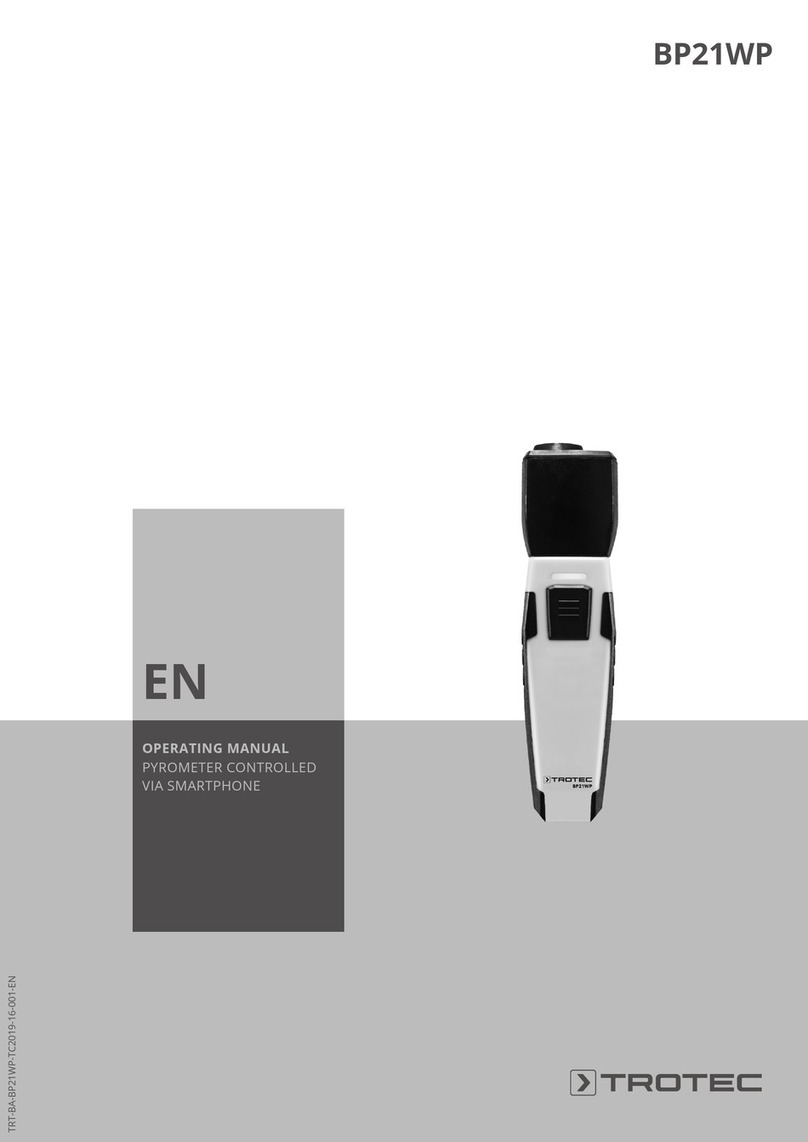
Trotec
Trotec BP21WP User manual
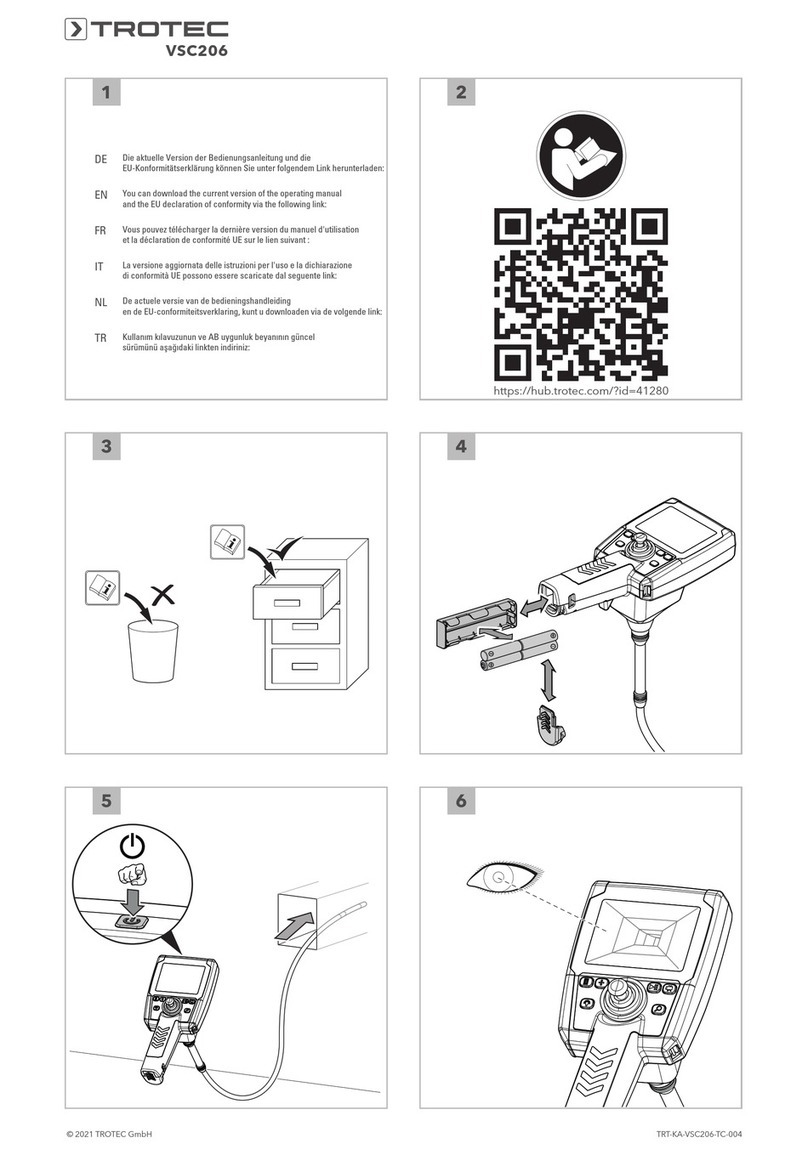
Trotec
Trotec VSC206 User manual
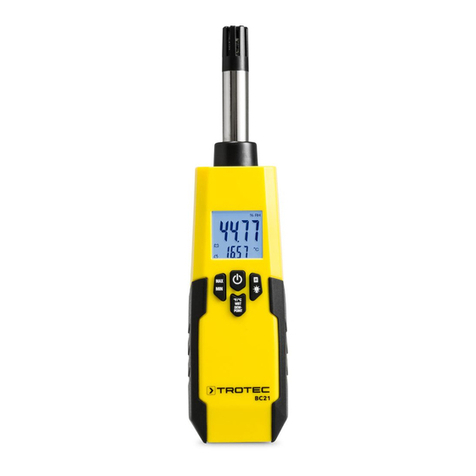
Trotec
Trotec BC21 User manual
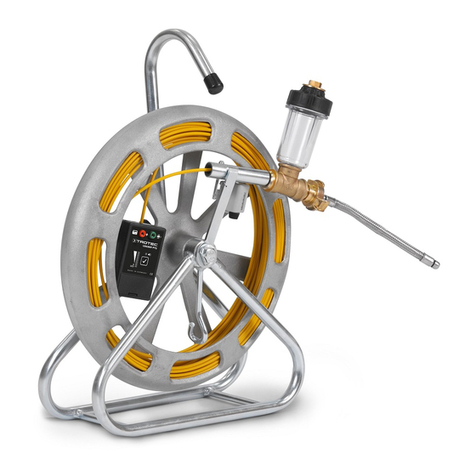
Trotec
Trotec LD6000 PTS User manual
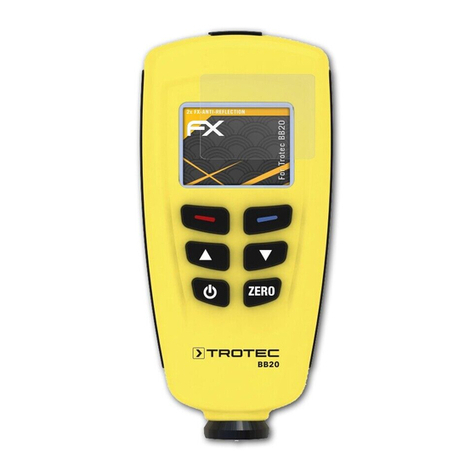
Trotec
Trotec BB20 User manual
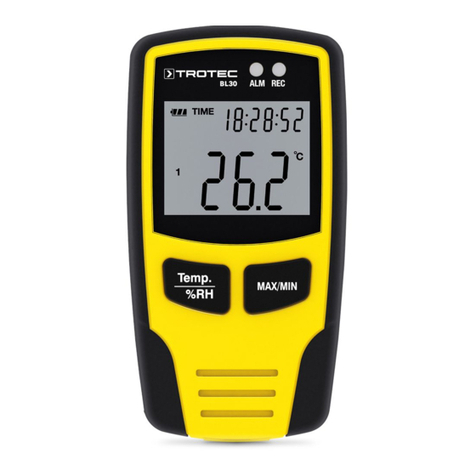
Trotec
Trotec BL30 User manual

Trotec
Trotec BM12 User manual
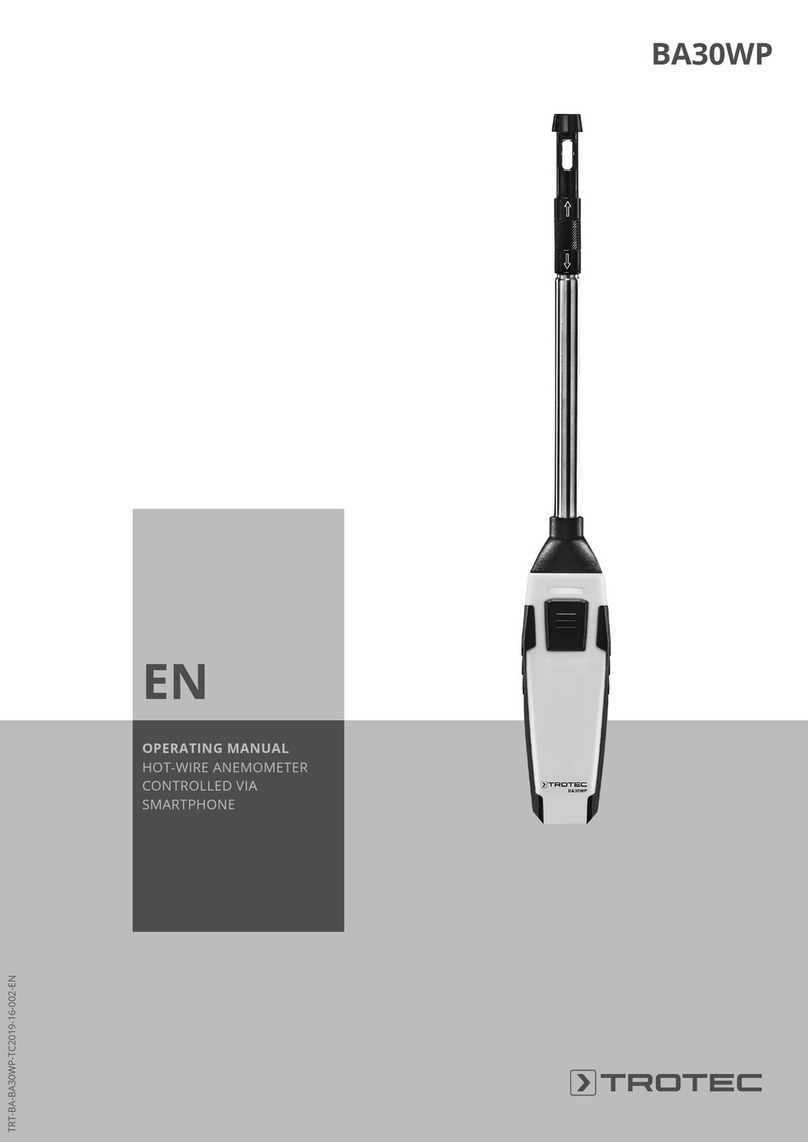
Trotec
Trotec BA30WP User manual
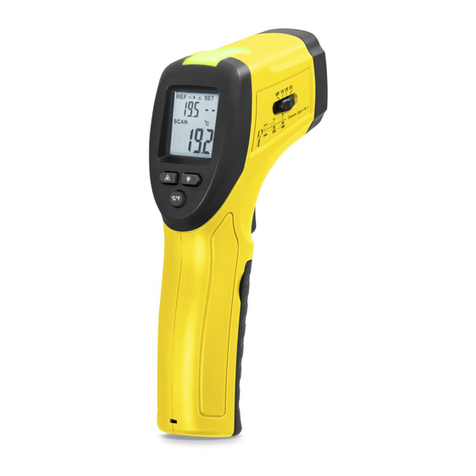
Trotec
Trotec BP17 User manual
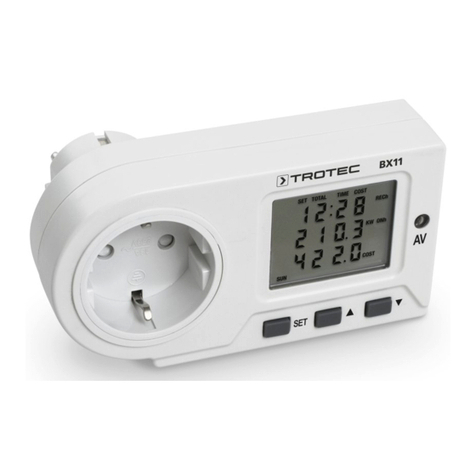
Trotec
Trotec BX11 User manual
